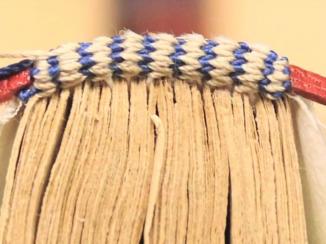Overview
‘Islamic’ and ‘Western’ are terms used to describe different styles of binding. Specific features relating to the materials and the techniques used in the making of the bindings have helped define these two categories.
The study of books’ structures as carriers of valuable information, in addition to the content, is quite a new field of research. Although much literature on the topic has been produced and new studies are being carried out by book conservators and scholars of the history of books, definitions like these do not provide a clear and unanimously agreed meaning related to book structures.
In fact, it has been recognised within the field of book studies that these terms could be replaced by more geographically, chronologically and historically meaningful definitions.
Misleading Terms
When writing about items produced outside the Western world, some Western book historians and conservators recognise their limited knowledge in this field. Inevitably, lack of direct experience in the handling, examination and treatment of these artefacts (when compared with their more ample experience with books originating in Europe) contributes to a general imbalance in favour of the weight of knowledge about so-called Western binding.
The word ‘Islamic’, when applied to book decoration and bookmaking techniques, is misleading. A term such as ‘Christian’ would never be used to define the style of a Western book. The same should be the case for the use of the term ‘Islamic’ as a definition for the books originating in an ‘Eastern’ context.
‘Islamic Style’ Binding
Nevertheless, it is useful to understand what is meant by ‘Islamic style’ binding in the broadest sense.
François Déroche, in his publication Islamic Codicology – an introduction to the Study of Manuscripts in Arabic Script, defines three main categories of ‘Islamic style’ bindings, which are today considered the main features of this kind of book structure. Before outlining specific styles, it is useful to provide some technical terms that are used by experts when referring to books’ physical features.
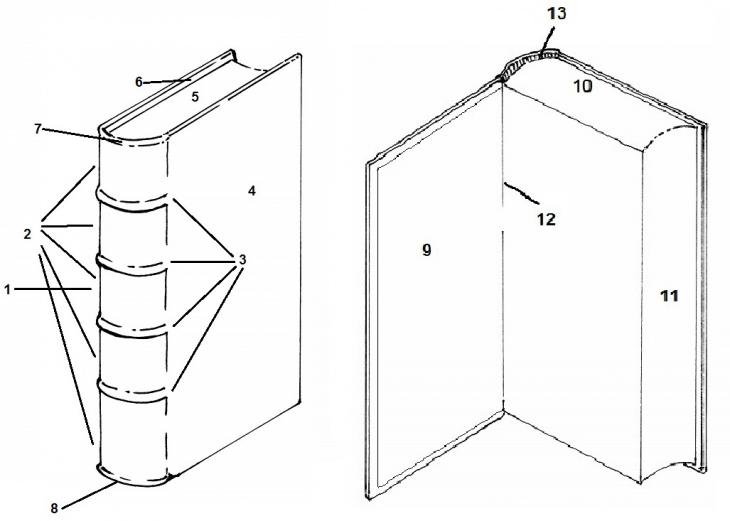
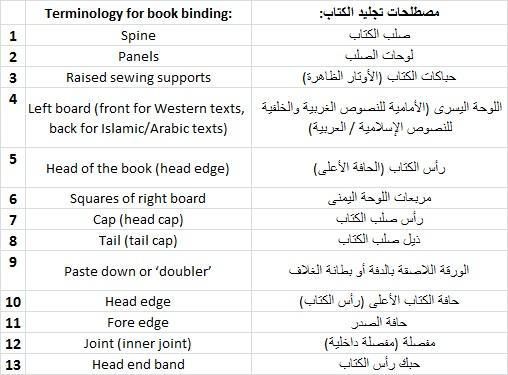
The three typologies of ‘Islamic style’ binding are characterised by: the absence of sewing supports (2), the typical sewing for the end bands (13) and the boards of the cover being flush with the edges of the book block (without the squares, as shown in 6). In one typology, the presence of a fore edge flap distinguishes the binding as ‘Islamic style’, however, that characteristic is not necessarily expected for the other two typologies.
Sewing Support: Securing the Book Block
The sewing supports, which are a typical feature of Western bindings, are the element of the book sewing structure that helps to keep the book block together. The book block itself is formed of a number of sections, or quires, which are in turn made up of bifolia (sing. bifolium) – sheets of parchment or paper folded in two to make two folios, as is shown in the diagram below. The sewing support also, in some cases, connects the book block with the cover.
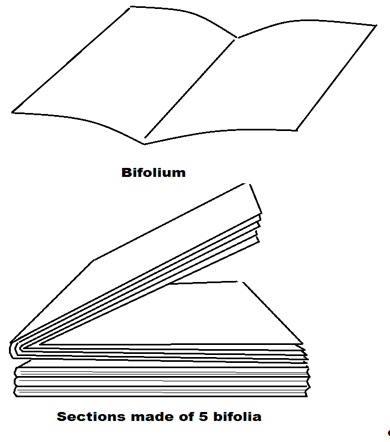
After passing through the middle of the sections, the thread used to create the links between the sections of a book is secured to the supports. These supports can be made from a range of different materials such as cord, tape or strips of leather. These can be considered the main characteristic of the ‘Western style’ book binding technique.

In the so-called ‘Islamic style’ binding there are no supports, and the connection between the different sections forming the book block is created only by the sewing thread itself, which forms a series of loops along the spine. This sewn structure secures the sections together and hence, the pages.

As illustrated in the above diagram and below image, ‘Islamic binding’ is characterised by: a flat spine (A), the boards flush with the rest of the book (B), the very peculiar sewing style and pattern of the end bands (C) and sometimes by the front flap (D).
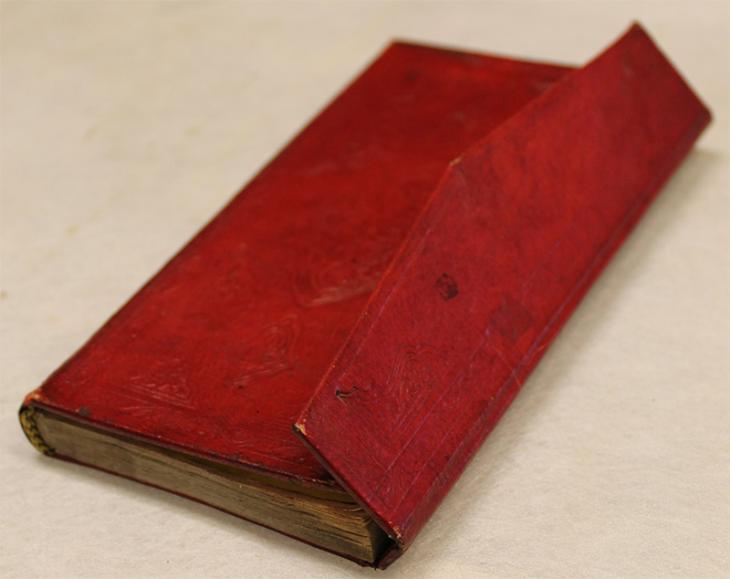
These features have been accepted, for practicality, in the field of book studies as characteristics that denote so-called ‘Islamic binding’. Increasingly, however, exceptions are becoming the rule. In-depth assessments of collections of books is required to narrow down this broad definition into more useful categories of bindings, related to specific chronological spans or geographical areas.
An Imbalance in History
Reliable histories of Western book production, book making techniques and book decoration – based on systematic surveys of large book collections present in public and private institutions in Europe and the U.S. – have long been available to scholars.
For material created outside this ‘Western’ paradigm, it is crucial to aim for more systematic surveys of material types, techniques and styles. Any such survey would provide a real basis for the creation of new definitions and meaningful categories, thereby enriching the understanding of individual books and collections and adding crucial information about their dates of production, provenance and value.
